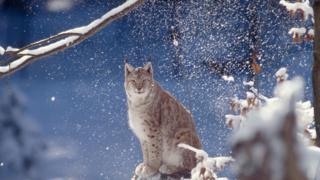- Sep 14, 2011
- 63,931
- 9,964
- 2,040
Wildlife Photographer Of The Year 2013: Jaw-Dropping, Award-Winning Photos
Absolutely stunning photos - Enjoy.
Absolutely stunning photos - Enjoy.
Follow along with the video below to see how to install our site as a web app on your home screen.

Note: This feature currently requires accessing the site using the built-in Safari browser.
The Living Planet assessment, by the Zoological Society of London (ZSL) and WWF, suggests that if the trend continues that decline could reach two-thirds among vertebrates by 2020. The figures suggest that animals living in lakes, rivers and wetlands are suffering the biggest losses. Human activity, including habitat loss, wildlife trade, pollution and climate change, is attributed to the declines. Dr Mike Barrett. head of science and policy at WWF, said: "It's pretty clear under 'business as usual' we will see continued declines in these wildlife populations. But I think now we've reached a point where there isn't really any excuse to let this carry on. "We know what the causes are and we know the scale of the impact that humans are having on nature and on wildlife populations - it really is now down to us to act." However the methodology of the report has been criticised.
The Living Planet Report is published every two years and aims to provide an assessment of the state of the world's wildlife. This analysis looked at data collected on 3,700 different species of birds, fish, mammals, amphibians and reptiles - about 6% of the total number of vertebrate species in the world. The researchers then analysed how the population sizes had changed over time since 1970. The last report, published in 2014, estimated that the world's wildlife populations had halved over the last 40 years. This assessment suggests that the trend has continued: since 1970, populations have declined by an average of 58%.

Dr Barrett said some groups of animals had fared worse than others. "We do see particularly strong declines in the freshwater environment - for freshwater species alone, the decline stands at 81% since 1970. This is related to the way water is used and taken out of fresh water systems, and also the fragmentation of freshwater systems through dam building, for example." It also highlighted other species, such as African elephants , which have suffered huge declines in recent years with the increase in poaching, and sharks, which are threatened by overfishing.
The researchers conclude that vertebrate populations are declining by an average of 2% each year, and warn that if nothing is done, wildlife populations could fall by 67% (below 1970 levels) by the end of the decade. Dr Robin Freeman, head of ZSL's Indicators & Assessments Unit, said: "But that's assuming things continue as we expect. If pressures - overexploitation, illegal wildlife trade, for example - increase or worsen, then that trend may be worse. "But one of the things I think is most important about these stats, these trends are declines in the number of animals in wildlife populations - they are not extinctions. By and large they are not vanishing, and that presents us with an opportunity to do something about it." However, Living Planet reports have drawn some criticisms.
MORE